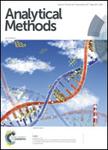版权所有:内蒙古大学图书馆 技术提供:维普资讯• 智图
内蒙古自治区呼和浩特市赛罕区大学西街235号 邮编: 010021

作者机构:Zhejiang Univ Res Ctr Analyt Instrumentat Inst Cyber Syst & Control State Key Lab Ind Control Technol Hangzhou 310027 Zhejiang Peoples R China Zhejiang Univ Coll Life Sci Hangzhou 310058 Zhejiang Peoples R China
出 版 物:《ANALYTICAL METHODS》 (分析方法)
年 卷 期:2019年第11卷第27期
页 面:3410-3418页
核心收录:
学科分类:0832[工学-食品科学与工程(可授工学、农学学位)] 081704[工学-应用化学] 07[理学] 08[工学] 0817[工学-化学工程与技术] 070302[理学-分析化学] 0703[理学-化学]
基 金:National Key R&D Program of China [2018YFF01012100] Fundamental Research Funds for the Central Universities Open Research Project of the State Key Laboratory of Industrial Control Technology, Zhejiang University, China [ICT1900345]
主 题:Polymerase chain reaction
摘 要:A digital polymerase chain reaction (dPCR) using fluorescence images for collecting quantitative information needs efficient software tools to automate the image analysis process. However, due to the broad range of fluorescence image characteristics, such as the uneven fluorescence intensity distribution, irregular structures of microarrays, and diverse and unpredictable morphologies of microchambers, existing tools fail to extract signals from these images properly, thus posing challenges for the improvement of detection accuracy. In this paper, a deep learning method based on the Mask R-CNN model was used for image processing to achieve more accurate quantification of nucleic acids in both microarray and droplet dPCR. This Mask R-CNN based method uses massive dPCR fluorescence image data to train a model that has the ability to recognize target signals in dPCR images precisely and automatically, regardless of the non-uniform luminosity or spot impurities appearing in dPCR images. When the Mask R-CNN model is used to process images with non-uniform luminosity, the true positive rate of this model can reach 97.56%. By contrast, the true positive rate of threshold segmentation is only 68.29%. As for dealing with images with spot impurities, which caused a 7.25% fault of the positive points in the threshold segmentation method, the error rate decreased to zero using the Mask R-CNN model. In addition, the labeling of annotated pictures is time-consuming. Therefore, an iteration method was used in the annotation stage to reduce time spent on labeling. With proper modifications, this method has great potential to serve as an alternative to achieve a highly efficient fluorescence image process for dPCR or other digital assays.